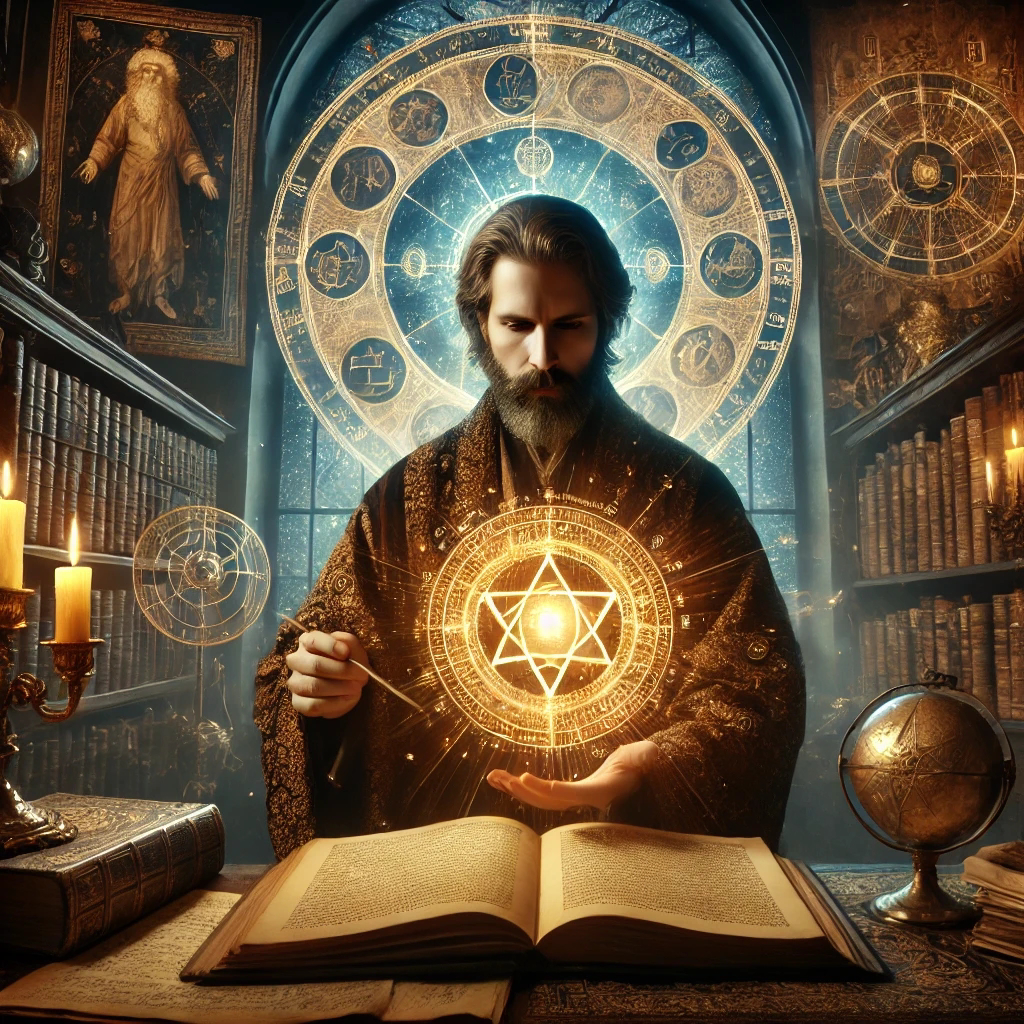Introduction
Renaissance Hermeticism was an intellectual and spiritual movement that reintroduced ancient wisdom to a world on the cusp of modernity. It fused elements of Greek philosophy, Egyptian mysticism, Christian theology, and alchemical traditions into a unique synthesis. Scholars, magi, and philosophers saw it as a path to divine knowledge, elevating both science and spirituality. This article explores its origins, key figures, philosophical tenets, and enduring impact.
The Rediscovery of Hermetic Wisdom
The seeds of Renaissance Hermeticism were planted with the rediscovery of the Corpus Hermeticum, a collection of mystical texts attributed to Hermes Trismegistus. These texts, translated by Marsilio Ficino in the late 15th century, presented a vision of a universe infused with divine intelligence. Unlike medieval scholasticism, which relied on rigid dogma, Hermeticism emphasized direct spiritual experience and the unity of all things. This new perspective invigorated thinkers, fueling the era’s broader intellectual revival.
The Influence of Marsilio Ficino
Marsilio Ficino (1433–1499) was a pivotal figure in the revival of Hermeticism. Commissioned by Cosimo de’ Medici, he translated the Corpus Hermeticum, which he initially believed predated Christianity. Ficino’s interpretation blended Neoplatonism with Hermetic thought, arguing that humans could ascend toward divinity through contemplation and spiritual refinement. His work laid the foundation for a movement that viewed knowledge as a means of transformation rather than mere intellectual pursuit.
Giovanni Pico della Mirandola and the Dignity of Man
Giovanni Pico della Mirandola (1463–1494) expanded Hermeticism by integrating it with Kabbalistic and Christian traditions. In his Oration on the Dignity of Man, he famously declared that humans possess the unique ability to shape their destiny. This idea aligned with Hermetic teachings on divine potential and self-transmutation. Pico’s work reinforced the belief that magic, philosophy, and religion could be harmonized in the quest for ultimate truth.
Hermeticism and Alchemy
Alchemy was more than an early form of chemistry—it was a spiritual science deeply tied to Hermetic principles. Practitioners believed that transmuting base metals into gold symbolized the purification of the soul. Figures like Paracelsus (1493–1541) took these ideas further, arguing that nature contained divine signatures that could be deciphered for healing and enlightenment. The alchemical quest mirrored the Hermetic goal of achieving spiritual perfection through understanding the hidden laws of nature.
The Role of Magic in Hermetic Thought
Renaissance Hermeticism embraced magic as a means of aligning with cosmic forces. The concept of natural magic, as promoted by thinkers like Giordano Bruno (1548–1600), suggested that knowledge of nature’s hidden properties allowed one to influence reality. This was not the sorcery of medieval superstition but a philosophical system aimed at harmonizing the microcosm and macrocosm. Such ideas laid the groundwork for later developments in both science and esotericism.
The Impact of Giordano Bruno
Giordano Bruno was one of the most radical Hermetic philosophers of the Renaissance. He argued for an infinite universe filled with countless worlds, a concept that directly challenged Catholic doctrine. Bruno saw Hermeticism as a way to liberate humanity from dogma, advocating a return to direct, mystical engagement with the divine. His execution in 1600 underscored the dangers of challenging religious orthodoxy, yet his ideas lived on in secret circles of thinkers.
The Decline of Renaissance Hermeticism
By the 17th century, Hermeticism began to wane as empirical science took center stage. The rise of figures like Francis Bacon and René Descartes signaled a shift toward rationalism and mechanistic views of the universe. Alchemy and astrology, once respected pursuits, were increasingly dismissed as pseudoscience. However, Hermetic thought never fully disappeared—it simply adapted to new intellectual climates.
The Lasting Influence of Hermeticism
Despite its decline as a mainstream philosophy, Hermeticism influenced later movements such as Freemasonry, Rosicrucianism, and Theosophy. Its emphasis on hidden knowledge and spiritual transformation inspired figures like Carl Jung, who integrated Hermetic symbols into his psychological theories. Even modern physics, with its notions of interconnectedness and observer-influenced reality, echoes certain Hermetic principles. The Renaissance revival of Hermeticism planted seeds that continue to shape esoteric thought and scientific inquiry today.
Conclusion
Renaissance Hermeticism was more than an intellectual trend—it was a bridge between ancient wisdom and modern thought. It offered a vision of the universe where science, spirituality, and magic were deeply intertwined. While its influence has ebbed and flowed over centuries, its core message remains relevant: knowledge is not just for understanding the world but for transforming oneself. In an age still grappling with the divide between science and spirituality, Hermetic wisdom remains a beacon for those seeking unity in knowledge.




